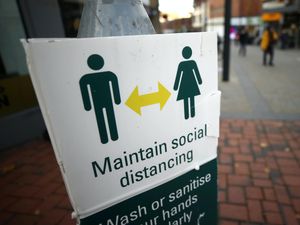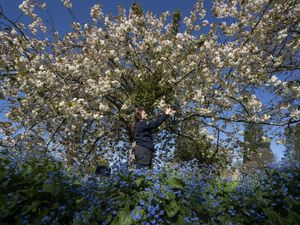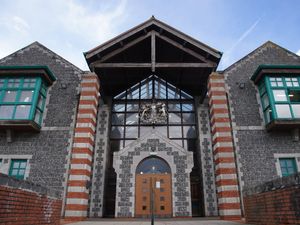R rate falls across UK and could be below one in some places, experts say
If the R value is above one then the Covid-19 epidemic continues to grow, but if it is below one it shows the outbreak is in retreat.

The reproduction number for coronavirus – the R value – is dropping across the UK and is potentially below one in some areas, according to scientists.
The Scientific Advisory Group for Emergencies (Sage), which advises the Government, said the R for the UK stood at 1-1.2, with its current prediction representing the situation over the last few weeks.
Experts believe the R value is below one in some places, particularly in parts of Wales and potentially parts of Scotland and the north west of England.
It is hoped that R will drop in more places next week or the week after, as people remain under lockdown restrictions.
If the R value is above one then the Covid-19 epidemic continues to grow, but if it is below one it shows the outbreak is in retreat.
For the past few weeks, Sage has put the R value at between 1.1 and 1.3.
Those looking at case data believe the growth rate is flattening, with the number of new cases per day across the UK thought to be between 55,000 and 81,000.

This takes into account cases in care homes and hospitals as well as in the community.
Younger age groups are seeing a fall in cases, though levels are still going up in older age groups, who are at most risk from Covid-19, according to experts.
The doubling time for the epidemic is thought to be between 28 and 63 days across the UK.

However, experts believe a high death rate may still be occurring at the end of November due to current coronavirus infections.
It comes as new figures from the Office for National Statistics (ONS) on Friday show there were an estimated 654,000 people in private households in England who had Covid-19 between October 31 and November 6.
The figures are a rise from 618,700 people in the period October 25 to 31, though ONS said daily infections had stabilised at about 50,000.

The ONS said that while the infection rate has increased in recent weeks, “the rate of increase is slower than previous weeks”.
Separate figures from the Zoe app study run by King’s College London found that the number of daily new Covid-19 cases is now declining across the UK.
Experts behind that study put the R in the North West at 0.8, and the UK R value at 0.9.
Tim Spector, professor of genetic epidemiology at King’s, said: “Having peaked at the end of October, cases coming down across most areas of the UK is good news but the numbers are still high in most areas, and with a prevalence of over 500,000 infected people, there is still a lot of virus in the population.”
It comes as daily confirmed coronavirus cases jumped by 46% to 33,470 on Thursday.

Some officials have suggested the increase – the highest to date – is as a result of people going out and socialising just before the current lockdown period began on November 5.
NHS medical director Stephen Powis played down the impact of the rise at a Downing Street press conference on Thursday.
He said: “It is important to look at the number of cases reported over a number of days and not just take one day in isolation.”
Separately, research by Imperial College London’s React study suggested around 100,000 new coronavirus infections were occurring per day in England at the start of the second lockdown last week.
In a statement on Friday, Sage also said it was confident the epidemic has continued to grow in England over recent weeks.
It said: “Although there is some evidence that the rate of growth in some parts of the country may be slowing, levels of disease are very high in these areas; significant levels of healthcare demand and mortality will persist until R is reduced to and remains well below one for an extended period of time.”
Experts believe that Tier 3 restrictions in parts of England with high numbers of cases, which were in place before the current lockdown, have had some impact in levelling off infections.
There has also been a potential effect from Tier 2 restrictions.
Meanwhile, new Sage documents released on Friday said the rising prevalence of Covid-19 cases “was first visible around the time that schools reopened”.
They added: “While this may be indicative of a potential role for school opening, causation, including the extent to which transmission is occurring in schools, is unproven and difficult to establish.”
Public Health England (PHE) has indicated that there have been more than 1,000 instances where there have been two or more positive cases of Covid-19 in educational settings since schools reopened.





